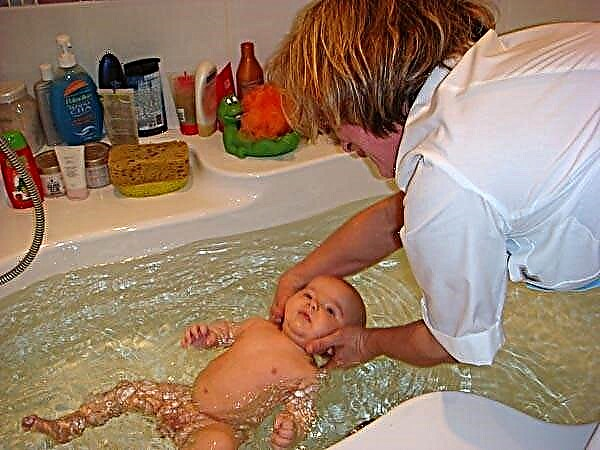
Every pregnant woman dreams that childbirth would be easier, devoid of acute unbearable pain, so that neither the child nor the woman would have birth trauma. This is not as difficult to achieve as it seems. Easy birth is not a gift from heaven, but the result of proper preparation. How to prepare for childbirth without pain, fear and tears on your own, we will tell you in this article.

What prevents to give birth easily?
There are special programs of psychoprophylactic preparation of pregnant women for painless and easy childbirth. Yes, you heard right. It really can be learned and taught.
Professor Bekhterev and Doctor Lurie devoted a lot of time to research in this direction, the method was improved by the French obstetrician Fernand Lamaze. In his edition, the technique of quick and painless childbirth has reached modern doctors and patients. All these experts, who were the luminaries of science, were sure that there are reasons that prevent a woman from giving birth easily, without tears, without injuries, without sharp excruciating pain.


The absence of these reasons in some representatives of the tribes of Asia, Africa, Latin America has long been considered the key to successful independent childbirth, which often a woman took at home.

So what prevents modern women from giving birth as easily and without complications? First of all, fear.
It is instilled in a girl from childhood, supported by public opinion, stereotypes, films and books. Fear settles firmly in the subconscious and prevents a woman from relaxing. At the physical level, fear causes muscle clamps, which leads to a manifold increase in pain and a slowdown in contractions and attempts. Fear contributes to overexcitation of the cerebral cortex, which is considered the main cause of labor pain.

Shortly before childbirth, the woman's uterus gets rid of excessive nerve fibers. Nature itself creates conditions for childbirth to be more painless. But an educated and well-read woman, having heard enough stories about terrible pains, herself reduces the efforts of nature to naught, burdening her own childbirth with fear and panic.
A woman who is psychologically unprepared for the birth of a baby, who is afraid, is ten times more likely to have ruptures in childbirth, traumatize the baby, complications from the weakness of the birth forces, in which a cesarean section has to be performed, to postpartum inflammatory processes due to difficult and prolonged labor ...

Women are afraid not only of pain, but also of the unknown, if they do not have sufficient information about their own anatomy, the course of birth processes and stages. Also, many suffer from increased anxiety about the outcome of childbirth - for the health of the baby, for what to feed him, how to support, teach, treat, and then go to university.
The second reason that creates difficulties in the process of childbirth is insufficient physical readiness. The more elastic and trained the muscles of the pelvic floor and perineum, the better they are prepared, the easier it will be to give birth to a child, without incisions, the imposition of obstetric forceps and other unforeseen obstacles. This is confirmed by numerous reviews.

Can these reasons be eliminated?
This is what the scientists and doctors listed by us were doing. And as a result, they offered women effective methods that can be mastered both in the courses of expectant mothers and on their own. Naturally, preparation will consist of two important stages - psychological and physical.

Preparing psychologically
The first thing to do for a woman who wants her labor to be easy, quick, and without cuts, tears, or pain is to face her own fear.
You need to honestly answer the question of what scares her the most. If it is difficult to figure out the causes of fears on your own, you can talk to a loved one whom the expectant mother trusts or seek help from a psychologist - such specialists are accepted in the antenatal clinic on a free basis.

After a woman is able to formulate what exactly she is afraid of, it is necessary to start working out negative thoughts and blocks, to the complete and irrevocable elimination of fear as such.
The fear of pain is the most common. You need to take unpleasant sensations for granted, but at the same time clearly understand that the pain exists in the head, it develops due to overexcitation of the cerebral cortex, which means that it can be controlled by a woman quite arbitrarily.

Uncertainty will cease to scare if a woman, instead of negative thoughts, begins to study the issue as thoroughly as possible - she learns about the structure and functions of her reproductive system, about the precursors of childbirth and their beginning, about each stage of labor.
This will help you understand exactly what is happening, why and how. There will be no uncertainty, and with it there will be no heightened anxiety.


The right mindset involves creating new positive attitudes that will replace the old blocks of fear. To master them, you can use the techniques of auto-training - self-hypnosis is an excellent tool in psychological preparation. All existing professional psychomethods are based on it. These positive attitudes can be helpful in the process.
"I have a responsible job" - such an attitude allows you to take responsibility for the process on yourself, to understand that much depends on the woman in labor herself, and not on the will of chance or the actions of medical personnel.

- “Childbirth is creativity and joy! "... Belief that a real sacrament is taking place, a woman literally creates the greatest miracle - a new life. The creative component lies in the fact that a woman can use the intervals between contractions to visualize positive images - the sea, a snow-white beach, a snow-covered forest, a cute baby's face for a walk, New Year's gifts, the first birthday, and the little one blowing out the candles on the cake. You can imagine anything to achieve maximum muscle relaxation.
The technique must be trained, brought to automatism, then in childbirth with visualization of positive attitudes, problems will not arise.
- “Everything will be at its best! " - this attitude excludes any negative thoughts already during childbirth. Even if negative thoughts appear, it will be easy for a woman to get rid of them by simply mentally crossing out the gloomy picture. Have you read and heard about the bad? Nothing, someone else had this bad, it will not affect you, because you are a different person.
- "The whole world, everyone around helps me and my child" - this is an installation of complete trust not only in doctors who are pregnant, delivering childbirth, but also an installation of trust in oneself. Your own body knows perfectly well how childbirth should proceed, it does everything that is necessary for a safe resolution of the burden. You just need to listen to him and try not to interfere - by screaming, suppressing pain, panicky expectation of the next fight. Each fight and attempt is another step towards the long-awaited meeting with your son or daughter.

Physical methods
Breaks and injuries in the mother, as well as injuries in the child, are possible only when the woman does not comply with the requirements of the obstetrician, panics, screams, tightens muscles, and squeezes at inappropriate moments.
Therefore, physical training also begins with the elimination of illiteracy - you need to find out which muscles and how they participate in the labor process, what is the mechanism of attempts and contractions, what biomechanisms of the birth of a baby exist. This will give a clear understanding of how to behave at different stages of labor, so as not to harm the baby and yourself.
Kegel exercises can help you prepare for childbirth without pain or tearing. Female doctor Arthur Kegel has created a unique complex aimed at strengthening the muscles of the pelvic floor and perineum, which are popularly called the Kegel muscles.


Exercises can be started at the end of the first trimester of pregnancy, giving it 10 minutes daily. Before you start doing the exercises, you should definitely consult with your doctor, since the complex has a list of contraindications.
The convenience of such training lies in the fact that a woman can do the exercises anywhere and anytime - in transport, at work, at home in front of the TV or while reading her favorite book. The following techniques are most useful for increasing the elasticity of the pelvic floor and perineum muscles:
- squeezing and unclenching the muscles of the vagina by an effort of will (10-12 times per approach in 2-3 approaches with different speeds and intensities on the rise);
- quick and slow unclenching of the vaginal muscles;
- a combination of deep inhalation and maximum compression with a slow and smooth exhalation and gradual relaxation;
- undulating compression of the pelvic muscles;
- lifting the pelvis from a prone position;
- circular rotation of the pelvis while sitting;
- keeping the muscles in a compressed state for the maximum long time.

There are other techniques in this complex, but two or three exercises for each lesson will be enough for a woman. For the next lesson, you will need to choose another 2-3 methods.
This gymnastics improves the condition of the bladder, strengthens the external sphincters, is an effective prevention of hemorrhoids during pregnancy and after childbirth, and also significantly reduces the likelihood of rupture. In addition, regular activities make a woman more sensitive to sexual sensations, due to which the quality of sex increases significantly, and the orgasm becomes brighter.

A woman is advised to prepare the birth canal not only with the help of exercises, but also with massage. It is recommended to massage the external genitals with light movements using any neutral oil (without perfumery fragrances) for 5 minutes a day.
Other muscle groups are also important. Therefore, from the very beginning of pregnancy, if there are no contraindications, a woman is recommended to swim, do water aerobics (there are specialized groups for women in an "interesting position" in the pools), leisurely walks, Pilates, and yoga for pregnant women.

Yoga classes help you learn how to relax and master the basics of meditation, tune in to painless childbirth. In yoga complexes for pregnant women, there are exercises that help strengthen the muscles of the pelvis and perineum, which will also help to avoid negative complications during childbirth.
General strengthening gymnastics will help to keep yourself in good shape until childbirth, to prevent exceeding the norms of the maximum permissible weight gain during gestation.
Any physical activity improves blood circulation in a woman's body, which means that the baby receives more oxygen, which is an excellent prevention of hypoxia.
As part of physical preparation for childbirth, it is necessary to master breathing techniques. During contractions, you need to take deep breaths and slow exhales in order to saturate the body with oxygen and achieve maximum muscle relaxation. Frequent and strong contractions are recommended to "breathe" with a series of short inhalations and exhalations, and in attempts it is important to take in air, round the diaphragm and literally push the baby out at the command of the obstetrician with a slow exhalation.

Respiratory gymnastics is a recognized by specialists method of natural pain relief during labor.
You also need to rehearse the postures that facilitate contractions, so that in reality, when labor begins, try all the options in search of the most comfortable one. You also need to master a simple and effective pain relieving massage of the sacral area, which can be used during rest periods between contractions.

Useful Tips
If a woman is determined to have an easy delivery without fear and pain, without tearing, she should consider the following options:
- vertical childbirth (as more natural and physiological);
- partner childbirth with the participation of a partner in joint positions at the stage of contractions;
- the possibility of using drug pain relief, which should be discussed with the doctor in advance.
An obstetrician-gynecologist talks about preparing for childbirth without pain and tears in the next video.



